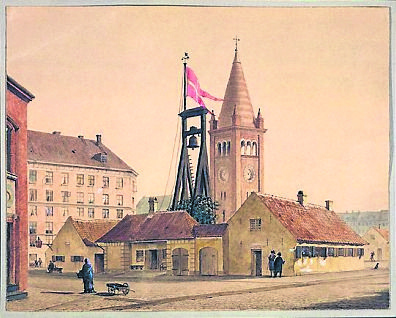We have a lot of reasons to be thankful for the reign of Christian IV, who was crowned king of Denmark and Norway in 1596 at the age of 19, although most of them are buildings. Take a short walk around inner-city Copenhagen, and his legacy is all-too evident in the form of the much-adored Renaissance structures. Shortly after his coronation, he launched ambitious building projects to transform the city of Copenhagen from a slum into a metropolis.
Many different influences
While his inspiration to bring Copenhagen out of the Middle Ages and into the Renaissance came from southern Europe, he was also influenced by countries closer to home.
A visit to northern Europe’s biggest armory in Dresden was enough for him to decide to build an even greater one in the heart of Copenhagen, which could equip an army of 60,000 men and naturally had a dock, so ships could sail straight in.
The Dutch were also an inspiration for the king, who saw it as his duty to attract skilled traders to the city. This led to the creation of a man-made island designed to resemble Dutch settlements with tall narrow houses and canals running through the streets: Christianshavn.
But Christian IV was hardly your typical Renaissance man. He was not very interested in studying or discussing the theoretical aspects of life. Instead, he was a practical man, who took great interest in technical subjects such as mechanics, shipbuilding and architecture.
And he was extremely hands-on when it came to his building projects. He liked to keep an eye on the labourers’ work – often complaining to the foremen about the lumps in the mortar.
Ambitiously amorous as well
The king’s love life was as ambitious as his building plans. He had more than 20 children with a number of women. He married Anna Kathrine of Brandenburg in 1597, but soon invited the queen’s maid into his chambers, who ended up giving birth to the king’s son just one day after the queen did the same.
A few years after Queen Anna Kathrine’s death in 1612, Christian got married to Kirsten Munk, 17, who he was head-over-heels in love with. They lived together in his love nest – Rosenborg Castle – and she managed to give birth to at least ten children before their relationship ended in 1628, when Christian IV accused her of being unfaithful. He was probably right, as it normally takes one to know one. Historians describe Munk as the love of his life, and the king never recovered from the break-up.
Disastrous military errors
Despite Christian IV’s status as the most famous and longest reigning king in Danish history, he is also known among historians as one of the worst leaders in European history. Despite his majestic building projects, which included the creation of the Norwegian capital Oslo, his decisions to take Denmark into hopeless wars, which left the nation weak and impoverished, cannot be overlooked.
The king’s decision to drag Denmark into the Thirty Years’ War (1618-1648) was an enormous mistake, which would change the course of Danish history. Despite countless warnings from his advisors, the king in 1625 decided to defy the Privy Council and side with the Protestant forces against the Catholics. He promptly declared war against the powerful Catholic German emperor, calling on all the German Protestant princes to join him. He even decided that he would lead the troops into battle.
But his abilities on the battlefield didn’t match those on the construction site. This was a different type of mortar. He rode the forces into a deathtrap set by the Catholic troops, from which he fled while most of his troops perished. Of the 20,000 horsemen who took to the field in the king’s first battle, only 80 returned!
On the verge of total ruin
And it didn’t stop there. Within two years Jutland was occupied by the Catholic forces, and the king’s war efforts, combined with the Catholic raids in Jutland, threatened to bankrupt a nation that had been richer than rich when Christian IV first came to power. He eventually surrendered to the victorious Catholics in 1629, but miraculously avoided surrendering any land, on the proviso that he would never interfere with German affairs again.
Meanwhile, Denmark’s perennial rival Sweden was in the ascendancy, growing in strength and successfully championing the Scandinavian Protestant cause, thanks to generous funding from their French allies. It represented a definite shift of power in the region, and in 1643 the Swedes attacked Denmark.
Soon all of Jutland became occupied, and the now 67-year-old Christian decided to lead his naval forces against the Swedes at the Battle of Kolberger Heide off the coast of present day Kiel in Germany.
An unwanted legacy
On the deck of his ship, in the midst of battle, the unfortunate king lost an eye as a Swedish cannonball struck the deck and sent shrapnel splintering in all directions. The king bravely fought on and did not receive treatment until after he had led the Danish forces to a narrow victory. He then kept the shrapnel once it was removed to make earrings for his lover.
Despite the narrow defeat, the Swedes won the war, and Denmark’s dominance in the region was over. Just two decades earlier, Christian’s economic policies had made him one of the richest kings in Europe. But when he died in 1648, after 52 years in power, his heir, Frederik III, was left with an impoverished and weakened nation – and a powerful enemy across the water.














